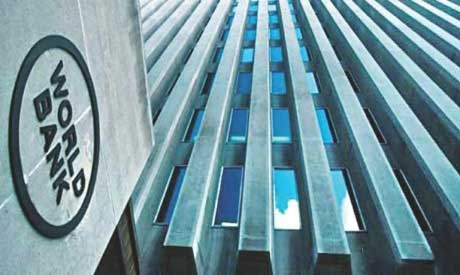
File Photo: Egypt will be affected by global market performance: World Bank senior economist says (Photo: AFP)
The gross domestic product (GDP) of Middle East and North Africa (MENA) countries is projected to slowly rebound by 2.2 percent in 2021 – 0.3 percent higher than the forecast released in October 2020 – after a contraction of 3.8 percent in 2020 – a 1.3 percentage point higher than the October 2020 projection – reported the World Bank (WB).
The outlook was published in a WB report on Friday on “Living With Debt: How Institutions can Chart a Path to Recovery for the Middle East and North Africa.”
The WB attributed the upward adjustment in 2020 estimates to a change in Iran’s GDP growth, which was raised from a contraction of 4.5 percent in the October 2020 forecasts to a modest growth of 1.7 percent.
Nevertheless, this regional growth estimate is 6.4 percent lower than the pre-pandemic growth forecast published in October 2019, according to the WB.
The expected rebound in 2021 comes on the back of a faster than expected recovery in oil prices, stated the report.
Yet, the expected rebound in 2021 is unlikely to bring the region back to the level of economic activity it had in 2019 and certainly not to the level the WB had expected before the pandemic.
“By 2021, the regional economy is forecast to be 7.2 percent below the no-pandemic counterfactual GDP level, equivalent to $227 billion. GDP per capita is arguably a more precise statistic of the region’s standard of living than GDP. The region’s average real GDP per capita is estimated to decline 5.3 percent in 2020. The region’s average real GDP per capita is forecast to increase by a meagre 0.6 percent in 2021. All in all, the region’s real GDP per capita in 2021 would be 4.7 percent below the level in 2019,” the report said.
Moreover, the GDP level in 2021 for developing oil importers, where Egypt is classified, is expected to be 9.3 percent below the counterfactual GDP level without the pandemic, according to the report.
The report said that declining government revenues combined with the need to back vulnerable families and other policy responses to the Covid-19 pandemic led to increases in public debt across the region.
The report also said that MENA entered the Covid-19 crisis with chronic low growth, macroeconomic imbalances, and weak governance, especially when it comes to transparency, adding that the pandemic has placed significant pressure on governments' fiscal positions.
Consequently, the region’s average fiscal deficit in 2020 is estimated to be accelerate to 9.4 percent of GDP, up from pre-pandemic forecast deficit of 4.6 percent.
On the MENA’s escalated debt levels, the report explained that given MENA countries have had to borrow to finance deficits, the pandemic is estimated to increase the region’s public debt to about 54 percent of GDP in 2020, accelerating the rise in public debt during the past decade.
It also projected the debt of oil-importing developing countries to reach 93 percent.
“Having entered the crisis with chronic low growth, high debt and poor governance, the region’s developing economies are facing difficult tradeoffs associated with the accumulation of debt. Institutional reforms and transparency can help chart a solid path to recovery,” stated the report.
It added that the sovereign credit default swaps (CDS) of Egypt, Tunisia and Iraq rose the most, more than CDS increases of GCC countries. As of early March 2021, CDS levels have returned to pre-pandemic levels, with some exceptions.
Based on the region’s baseline growth forecasts, the report expected the number of poor people in the region — who make less than the $5.50 per day poverty line — to jump to 192 million people by the end of 2021, up from 176 million in 2019.
Short link: